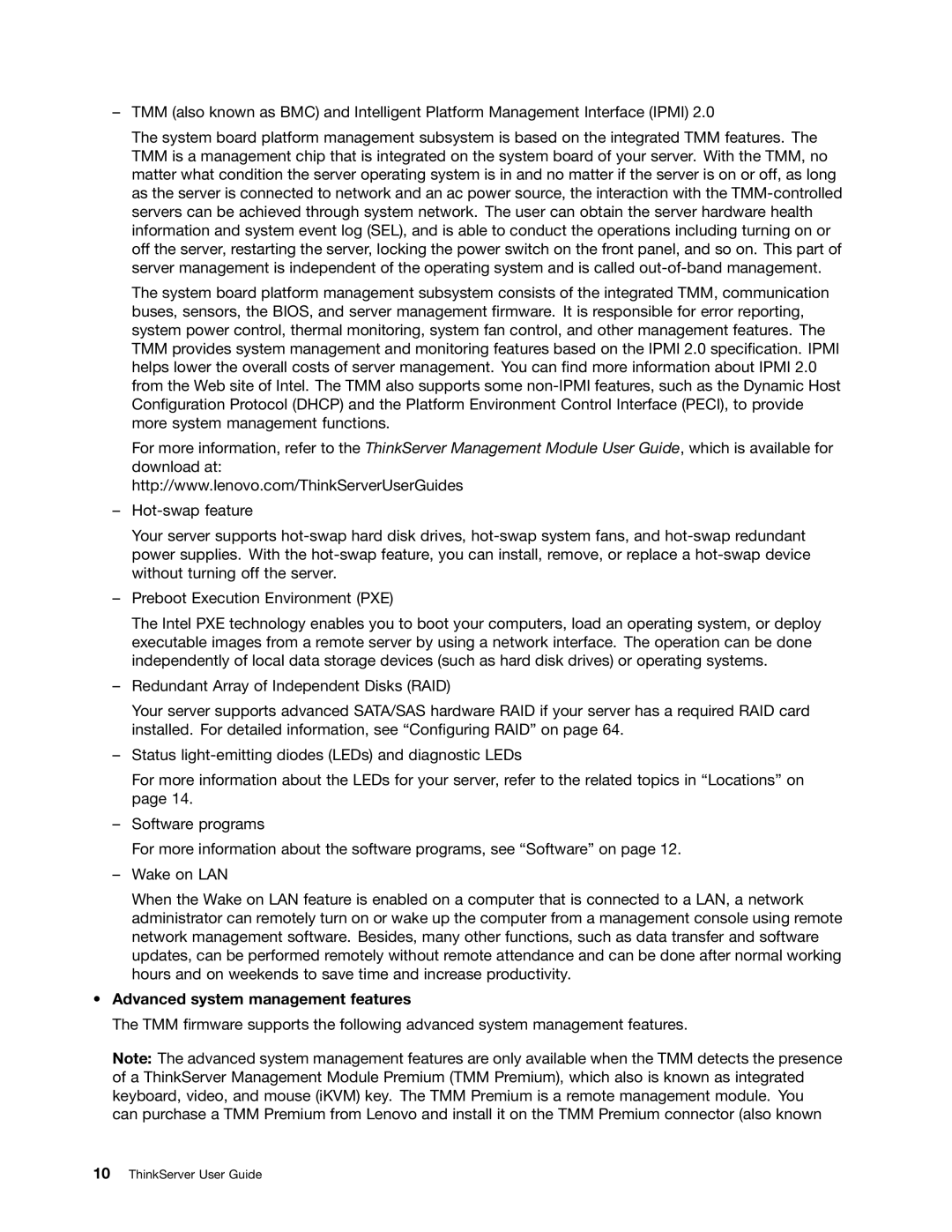–TMM (also known as BMC) and Intelligent Platform Management Interface (IPMI) 2.0
The system board platform management subsystem is based on the integrated TMM features. The TMM is a management chip that is integrated on the system board of your server. With the TMM, no matter what condition the server operating system is in and no matter if the server is on or off, as long as the server is connected to network and an ac power source, the interaction with the
The system board platform management subsystem consists of the integrated TMM, communication buses, sensors, the BIOS, and server management firmware. It is responsible for error reporting, system power control, thermal monitoring, system fan control, and other management features. The TMM provides system management and monitoring features based on the IPMI 2.0 specification. IPMI helps lower the overall costs of server management. You can find more information about IPMI 2.0 from the Web site of Intel. The TMM also supports some
For more information, refer to the ThinkServer Management Module User Guide, which is available for download at:
http://www.lenovo.com/ThinkServerUserGuides
–
Your server supports
–Preboot Execution Environment (PXE)
The Intel PXE technology enables you to boot your computers, load an operating system, or deploy executable images from a remote server by using a network interface. The operation can be done independently of local data storage devices (such as hard disk drives) or operating systems.
–Redundant Array of Independent Disks (RAID)
Your server supports advanced SATA/SAS hardware RAID if your server has a required RAID card installed. For detailed information, see “Configuring RAID” on page 64.
–Status
For more information about the LEDs for your server, refer to the related topics in “Locations” on page 14.
–Software programs
For more information about the software programs, see “Software” on page 12.
–Wake on LAN
When the Wake on LAN feature is enabled on a computer that is connected to a LAN, a network administrator can remotely turn on or wake up the computer from a management console using remote network management software. Besides, many other functions, such as data transfer and software updates, can be performed remotely without remote attendance and can be done after normal working hours and on weekends to save time and increase productivity.
•Advanced system management features
The TMM firmware supports the following advanced system management features.
Note: The advanced system management features are only available when the TMM detects the presence of a ThinkServer Management Module Premium (TMM Premium), which also is known as integrated keyboard, video, and mouse (iKVM) key. The TMM Premium is a remote management module. You can purchase a TMM Premium from Lenovo and install it on the TMM Premium connector (also known
